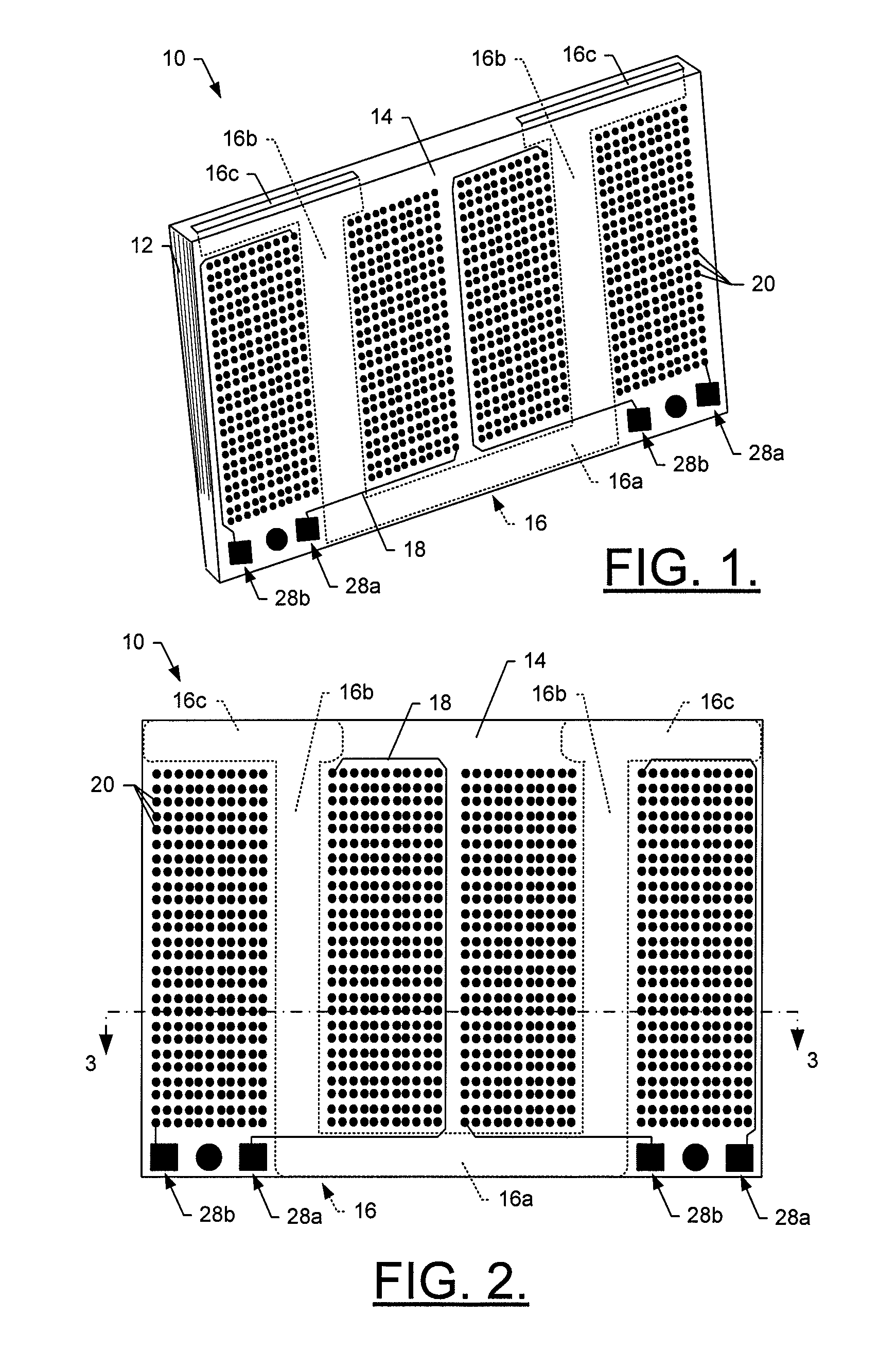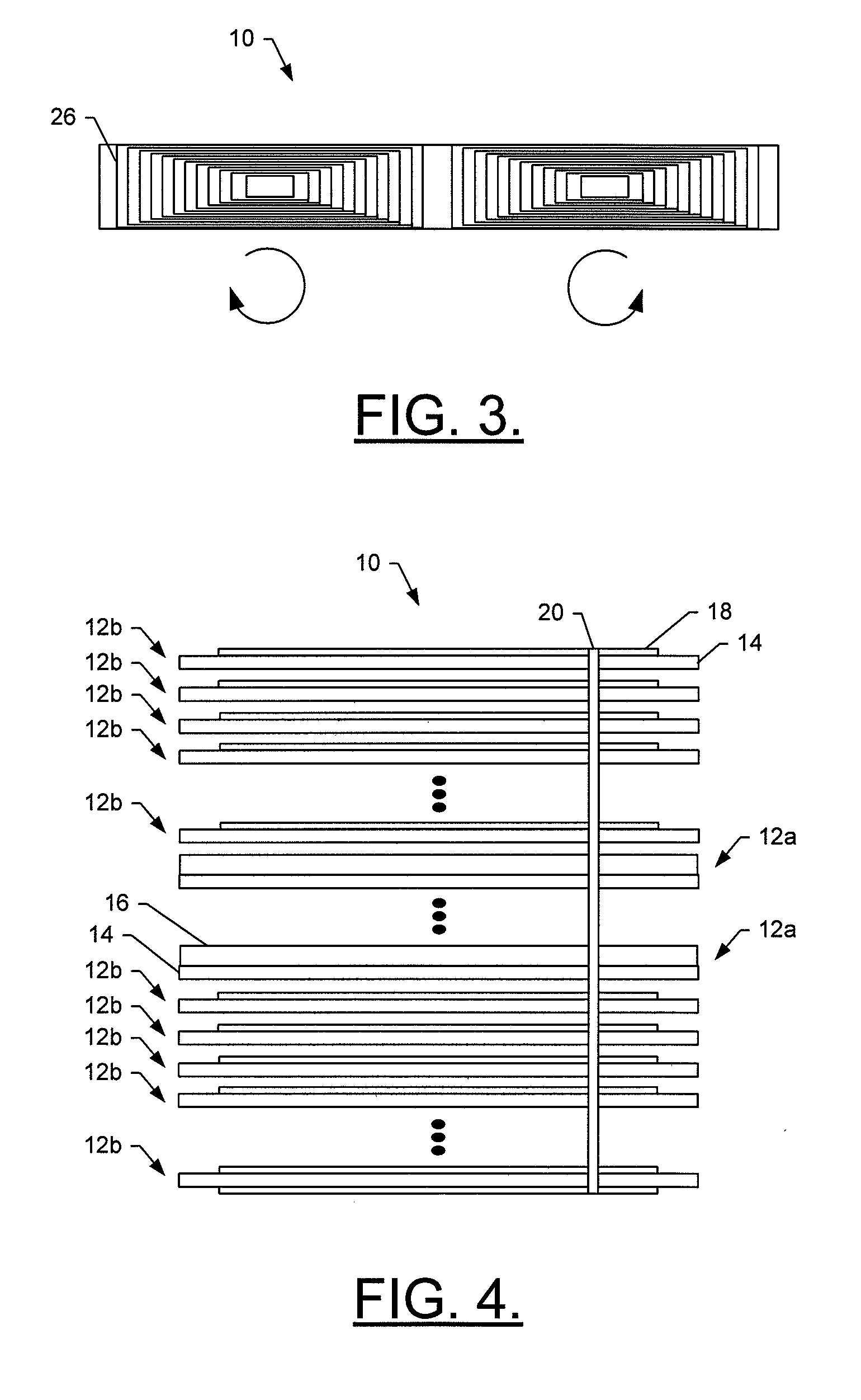Printed circuit card-based proximity sensor and associated method of detecting a proximity of an object
a technology of proximity sensor and printed circuit card, which is applied in the direction of transformer/inductance magnetic core, pulse technique, instruments, etc., can solve the problems of increasing the likelihood of sensor failure, changing the measured inductance of the sensor, and exceeding the tolerance of the sensor, so as to reduce failure, increase the reliability of the sensor, and reduce the cost
- Summary
- Abstract
- Description
- Claims
- Application Information
AI Technical Summary
Benefits of technology
Problems solved by technology
Method used
Image
Examples
Embodiment Construction
[0026] The present invention now will be described more fully hereinafter with reference to the accompanying drawings, in which preferred embodiments of the invention are shown. This invention may, however, be embodied in many different forms and should not be construed as limited to the embodiments set forth herein; rather, these embodiments are provided so that this disclosure will be thorough and complete, and will fully convey the scope of the invention to those skilled in the art. Like numbers refer to like elements throughout.
[0027] Reference is now made to FIGS. 1, 2, 3 and 4, which illustrate a perspective view, a top view, a cross-section view and an exploded side view, respectively, of a printed circuit-card based proximity sensor 10, in accordance with one embodiment of the present invention. As shown, the proximity sensor comprises a PWB that includes a plurality of layers 12 stacked on top of one another. The layers of the multilayer PWB, then, can include at least one...
PUM
| Property | Measurement | Unit |
|---|---|---|
| width | aaaaa | aaaaa |
| length | aaaaa | aaaaa |
| length | aaaaa | aaaaa |
Abstract
Description
Claims
Application Information
 Login to View More
Login to View More - R&D
- Intellectual Property
- Life Sciences
- Materials
- Tech Scout
- Unparalleled Data Quality
- Higher Quality Content
- 60% Fewer Hallucinations
Browse by: Latest US Patents, China's latest patents, Technical Efficacy Thesaurus, Application Domain, Technology Topic, Popular Technical Reports.
© 2025 PatSnap. All rights reserved.Legal|Privacy policy|Modern Slavery Act Transparency Statement|Sitemap|About US| Contact US: help@patsnap.com



